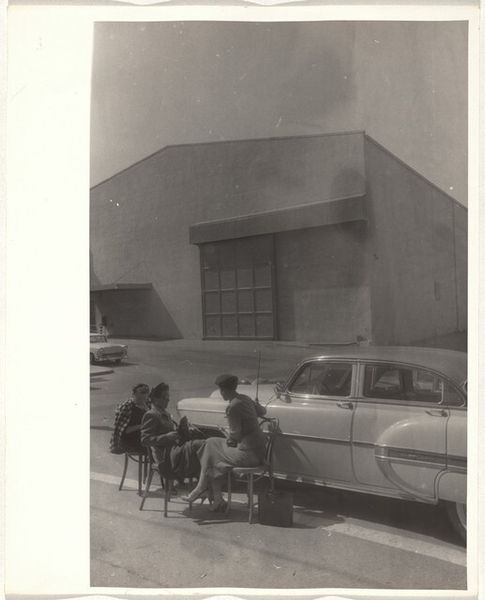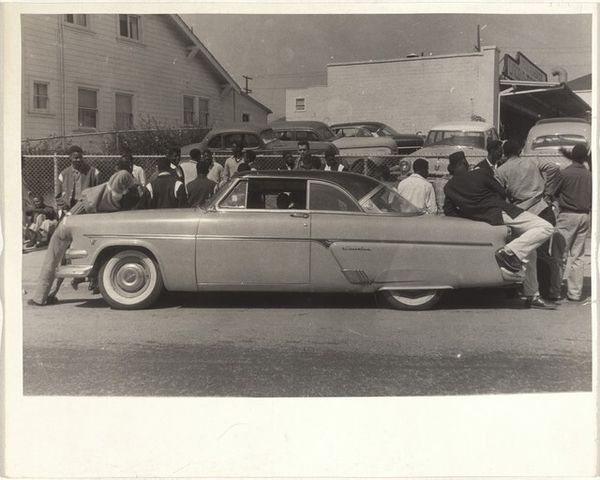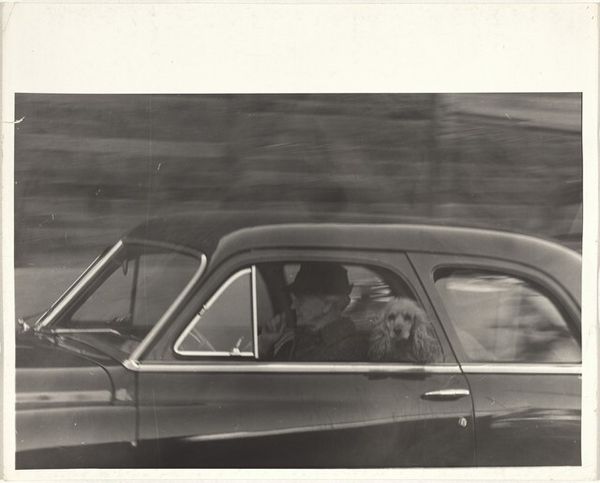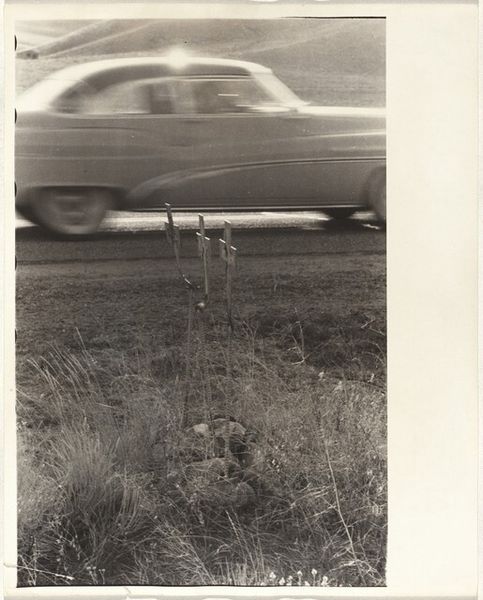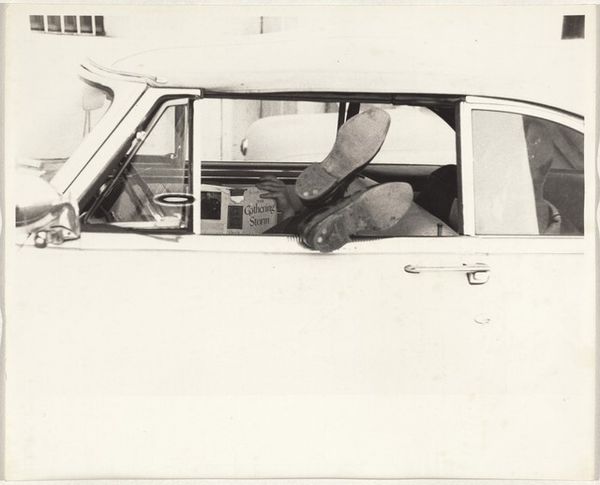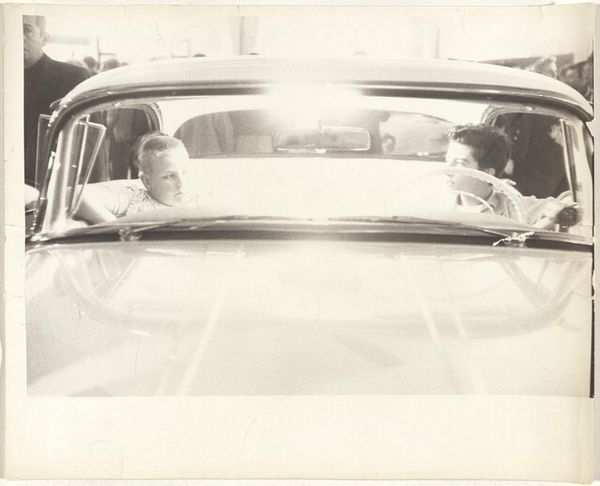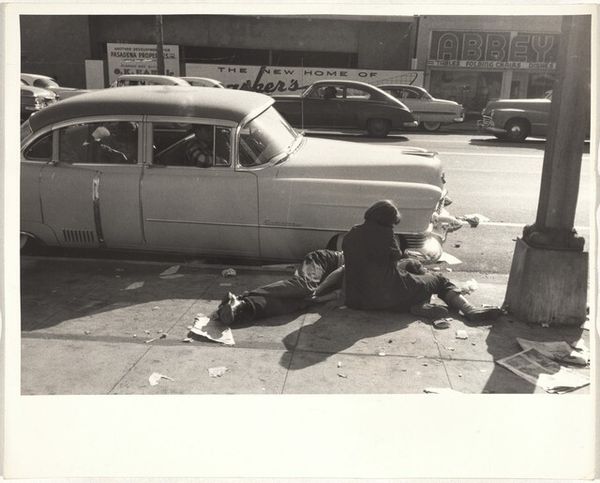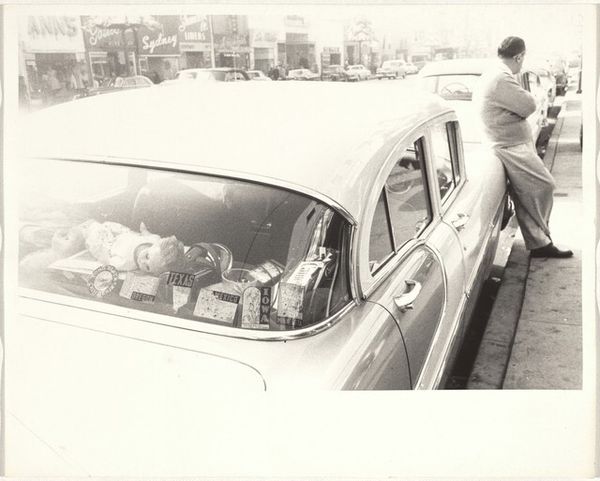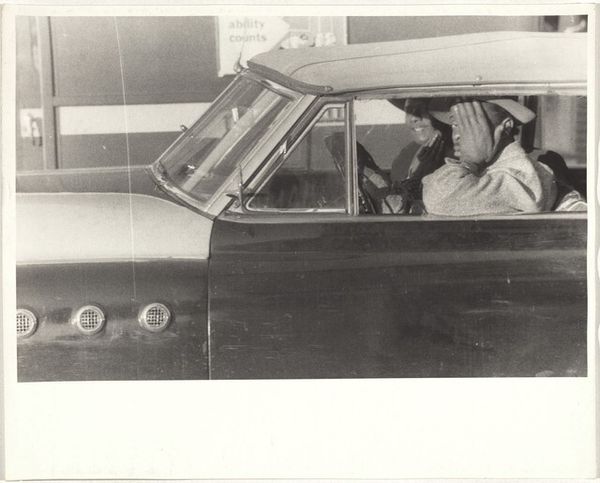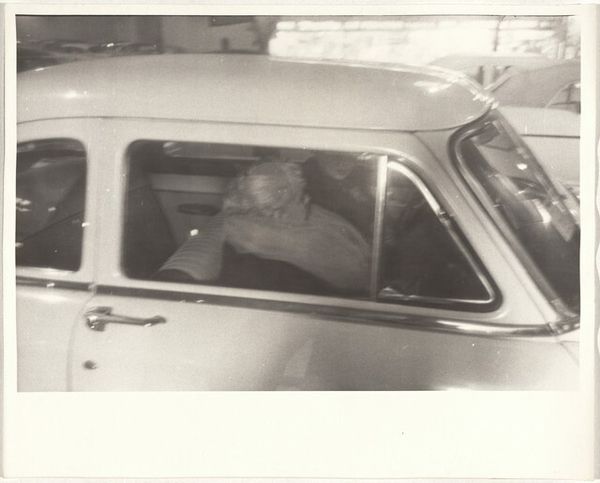
print, photography, gelatin-silver-print
#
portrait
# print
#
landscape
#
street-photography
#
photography
#
gelatin-silver-print
#
monochrome photography
#
pop-art
#
modernism
#
realism
#
monochrome
Dimensions: sheet: 20.2 x 25.2 cm (7 15/16 x 9 15/16 in.)
Copyright: National Gallery of Art: CC0 1.0
Curator: Let's turn our attention to Robert Frank's "Automobile and plants--Los Angeles," taken in 1956, a gelatin silver print that feels so distinctly American. Editor: My immediate impression is the contrast; a gritty, almost lonely stillness. The monochromatic palette underscores a starkness – is this capturing a moment or a mood? Curator: Structurally, the composition intrigues. The photograph is almost divided into zones—the clear directive of the painted road marking, the stoic automobile, and the man gesturing towards potted plants against a nondescript wall. The interplay of horizontals and verticals creates a measured rhythm. Editor: Absolutely, that division speaks volumes. Cars often represent freedom, the open road, but here, its dynamism is tethered by the static man and, literally, weighed down with potted plants. They create a visual oxymoron, uprooting nature from the ground only to fix it to a machine. Are these trophies or burdens of domesticity? Curator: Iconographically, we see layering of symbols. The car, a recurring motif in Frank's work, suggests movement and possibility, while the plants could signify rootedness, domesticity or even aspirations for something more organic amidst urban sprawl. It’s worth recalling, Frank, being Swiss, saw America with outsider's eyes and that often resulted in quite somber tonality of his photographs. Editor: Yes, and even the man's gesture—it's ambiguous. Is he presenting the plants, warding them, or maybe just contemplating. The anonymity heightens a sense of alienation, of disconnectedness amidst these emblems of American life. Curator: Furthermore, technically, the use of high contrast adds to the image's bluntness. The shadows are deep, the highlights are stark, stripping away any romanticism, any visual indulgence from it. It presents a matter-of-fact view of a very specific scene. Editor: It makes me wonder, in choosing such everyday objects and setting up these compositional relations, if Frank were inviting us to question our perception of normality, unveiling the odd poetry inherent in such quiet, unspectacular encounters. Curator: A fitting question to leave us contemplating on this American tableau! Editor: Indeed, and Frank offers plenty for viewers to dissect on their own.
Comments
No comments
Be the first to comment and join the conversation on the ultimate creative platform.
